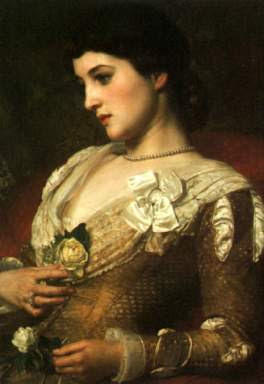Overtime scholars have willfully studied the works of many artists and writers of the Victorian Era, in which they were known for their skillful portrayals of life around them. Artists and writers like Dante Gabriel Rossetti and William Hogarth presented society with the ideal man or woman through their own perspectives. Common themes revolved around societal issues in need of progress, one of those being prostitution. What are deemed as surprising are the many male artists and writers who acted as mere narrators for women through their works. Countless infamous paintings, passages, and poems depict various females dwelling in shame and misfortune. These works portray women being turned away from their homes, floating to shore after commits of suicide, posing in flashy clothing that suggests promiscuity, etc. Most of these portrayals are construed through male perceptions of women during the Victorian Period.
During the mid-1800s Dante Gabriel Rossetti wrote a long, detailed poem, “Jenny”, in which a male companion articulates his sympathy for a “fallen” woman of damnation. However, in his attempt to sympathize with the young prostitute through words of sheer comfort, he acknowledges the many faults that have led to her disgrace, painting her as nothing more than an utter distress.

In the early 1700s William Hogarth constructed two artworks, titled ‘Before’ and ‘After’ in which a man and a woman are obliviously having a love affair far off into the woods. As the male inconsiderably courts the female in the ‘Before’ painting her legs lay sprawled along the ground in the ‘After’ painting, exposing her undergarments with the indication that she has given up her most prized possession. Much like Rossetti’s “Jenny”, Hogarth has presented society with yet another male depiction of women.
Unfortunately, there are many additional images that have not only represented women as weak-minded creatures, but also as unequal to men in general. These historical pictures and writings are simple truths and evidence that women have always been represented as negative beings. In works like those of Hogarth’s and Rossetti’s the men are usually the victims, the witnesses, the saviours, or simply the ignored. Sadly enough, years after the Victorian era women are still represented the same way and that is a ruin.





